23 August 2008
A technical visit was made by representatives of PAAB, MOF, KTAK, SPAN and SMHB to France and the United Kingdom between 17 to 23 August 2008. The technical visit was made with the objective of providing the delegates who are key members from the various parties involved in the project, the opportunity to visit and observe the operations of water treatment plants (WTP) that are operating successfully with similar treatment process systems that are intended to be implemented for the Langat 2 WTP. Some of the plants selected utilize advanced treatment systems that showcase a broader spectrum of available treatment methods. Another key objective of the technical visit was to provide a comparison and better understanding of how treatment plant residuals are handled at overseas water treatment facilities.
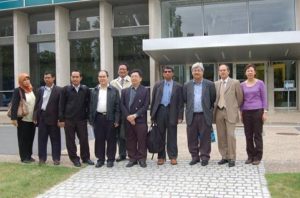
Delegation Members (L to R) : Pn Rogayah, En Mohd Yusri, En Hazwan, Mr Lee KY, Hj Isa,
Ir Tham YK, Ir Ab Kadir, Ir Prem Kumar, Mr Jean Luc Willem (Veolia), Ir Loo AC
The technical visit was successful in meeting all its objectives although many delegates found the pace taxing and the program too hectic. During the visit, seven facilities were visited; five in France and the remaining two in the United Kingdom as follows:
MERY-SUR-OISE Water Treatment Plant
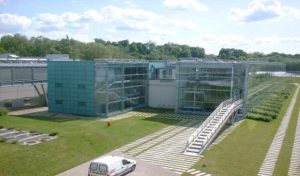
The plant was first commissioned in 1911 with a production capacity of 200 Mld but has been upgraded several times over the years. In 1980, a raw water bunded storage reservoir was added which allows for a buffer of about 1 to 2 days storage; whereas in 1999, a major upgrade was carried out which increased the plant production capacity by another 140 Mld. This new stream applies the membrane filtration technology to provide better treated water quality. This plant afforded the delegates an opportunity to observe up close the use of membrane technology in the production of potable water.
ANNET-SUR-MARNE Water Treatment Plant
The Annet WTP was first commissioned in 1960 with a plant capacity of 20 Mld. It was upgraded in stages and the total plant capacity is currently 130 Mld.
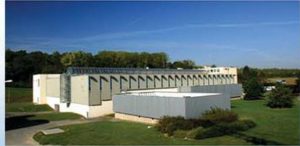
The main purpose of the visit to the Annet–sur-Marne WTP is to observe the residuals treatment facility at the plant. A treatment unit for residual solids was installed at the Annet WTP in 2004. Iron chloride is added to the material recovered throughout the water treatment processes (i.e. from the draining of sedimentation tanks and washing of filters) to facilitate gravity separation of the residual solids and water in a lamella thickener. The resulting residual solids is stabilised with lime, then compressed in two filter presses that squeeze out the remaining water. The dry solids are then removed by lorry and are used partially as capping layers on landfill sites and as soil improvers in agricultural farmland. The amount of residuals generated at the WTP is about 125 tonnes per month.
MONT-VALERIEN Water Treatment Plant
This is a 115 Mld WTP that treats water drawn from the Seine River downstream of Paris. The Mont-Valerien WTP is owned by Syndicat des Eaux de la Presquile de Gennevilliers. The plant supplies water to several suburbs in the outskirts of Paris. The Mont-Valerien treatment plant is designed and built by Degremont, a water treatment specialist company under the Suez Environment group.

Among of the unique features of this plant is the use of nitrifying filters to treat ammonia and also the use of ozonation followed by GAC filters to help in the removal of taste, odour and organics.
CIRSEE R&D FACILITIES OF SUEZ ENVIRONMENT
The delegates were invited to visit CIRSEE or International Research Centre on Water and the Environment of Suez Environment. This Centre was formed in 1981 and carries out R&D projects, technical assistance missions, training and knowledge sharing among Suez Environment’s technical groups in various parts of the world. The Centre also collaborates with universities, associations and other professional organisations. The Centre has about 100 experts, researchers and technicians.
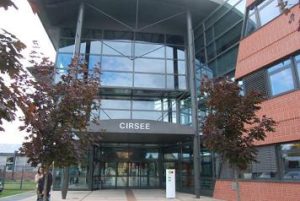
During the presentation by CIRSEE, it was found that the Centre was carrying out research into the handling of residuals from water treatment processes amongst other areas of research. This is an area of common interest and much discussion was held on this subject.
MORSANG-SUR-SEINE Water Treatment Plant
The Morsang-sur-Seine WTP is located about 50 km from Paris and abstracts raw water from the Seine River upstream of the main city. The WTP which is fully owned by Lyonnaise Des Eaux was first commissioned in 1970 and was later extended in 1975 to double the capacity. In 1988 a third unit was added which further increased the plant capacity to its current nominal production of 225 Mld.
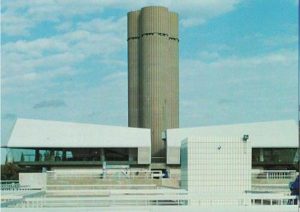
This treatment plant demonstrates the development of Degremont’s clarification processes; the Pulsator, Superpulsator and the Densadeg systems all of which are installed in three phases as three wings of the water treatment plant. This has provided the delegates an opportunity to observe the improvements in the clarification systems as they are developed.
BIWATER TREATMENT LTD OFFICE
Biwater Treatment Ltd is part of Biwater Plc, an international company with a long track record of over 100 years in the water industry. Biwater has projects internationally in over sixty countries. The Biwater Treatment office is located in Heywood, Manchester, United Kingdom. This arm of Biwater Plc provides engineering solutions for water and wastewater treatment designs. Their services also cover asset management and leakage detection through a specialist arm.
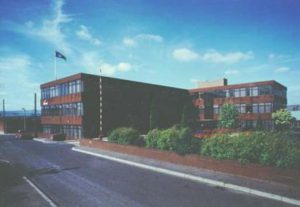
Biwater presented on their design experiences especially in relation to the Eastbourne Marine Treatment Works which due to aesthetics had to be located underground.
WATCHGATE CUMBRIA Water Treatment Plant
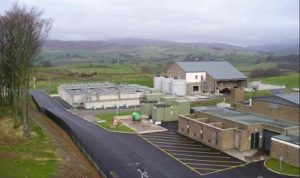
The Watchgate Cumbria water treatment plant is located at Kendal in the Lake District, UK. The plant is designed for 621 Mld capacity, but the average production is 450 Mld with maximum production of 570 Mld. The plant is operated by United Utilities to supply water to Manchester City and its surrounding districts. The water is distributed via 2.4 m diameter steel lined concrete aqueduct that run for about 90 miles. The plant was upgraded in 2003 to provide improvements to the existing water treatment works to protect against cryptosporidium. The upgrading works also included provision of plant residuals treatment facilities. The Watchgate WTP is United Utilities largest plant supplying 35% of its customers (about 1.5 million population).

